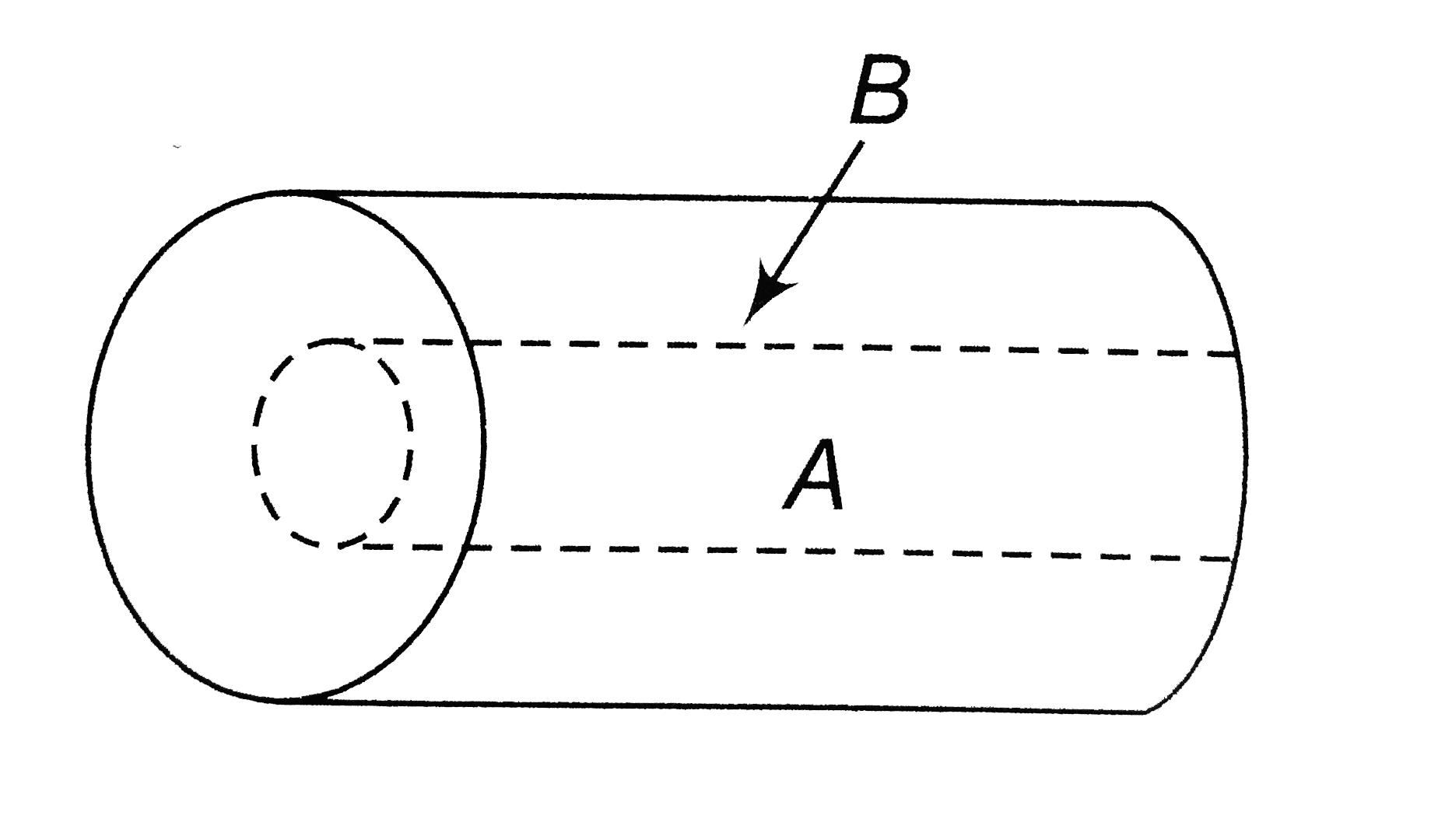The thermal conductivity of a material in CGS system is 0.4. In steady state, the rate of flow of heat 10 cal/sec-cm, then the thermal gradient will be
10∘C/cm
12∘C/cm
25∘C/cm
20∘C/cm
The correct Answer is:C
To solve the problem, we will use the formula for the rate of heat flow through a material, which is given by Fourier's law of heat conduction:
dQdt=k⋅A⋅dTdx
where:
- dQdt = rate of heat flow (in cal/sec)
- k = thermal conductivity (in cal/sec-cm-°C)
- A = cross-sectional area (in cm²)
- dTdx = thermal gradient (in °C/cm)
Step 1: Identify the given values
From the problem, we have:
- Thermal conductivity, k=0.4cal/sec-cm-°C
- Rate of heat flow, dQdt=10cal/sec
- We will assume the area A=1cm2 since it is not specified.
Step 2: Rearrange the formula to find the thermal gradient
We need to find dTdx, so we rearrange the formula:
dTdx=dQdtk⋅A
Step 3: Substitute the known values into the equation
Substituting the known values into the rearranged formula:
dTdx=10cal/sec0.4cal/sec-cm-°C⋅1cm2
Step 4: Calculate the thermal gradient
Now we perform the calculation:
dTdx=100.4=25°C/cm
Final Result
The thermal gradient dTdx is 25°C/cm.
---
- dQdt = rate of heat flow (in cal/sec)
- k = thermal conductivity (in cal/sec-cm-°C)
- A = cross-sectional area (in cm²)
- dTdx = thermal gradient (in °C/cm)
From the problem, we have:
- Thermal conductivity, k=0.4cal/sec-cm-°C
- Rate of heat flow, dQdt=10cal/sec
- We will assume the area A=1cm2 since it is not specified.
We need to find dTdx, so we rearrange the formula:
Substituting the known values into the rearranged formula:
Now we perform the calculation:
The thermal gradient dTdx is 25°C/cm.
Topper's Solved these Questions
- TRANSMISSION OF HEATBook:ERRORLESS Chapter:TRANSMISSION OF HEATExercise:Convection
Explore 13 Videos
- TRANSMISSION OF HEATBook:ERRORLESS Chapter:TRANSMISSION OF HEATExercise:Radiation (General, Kirchoff s law, Black body)
Explore 38 Videos
- THERMOMETRY, THERMAL EXPANSION AND CALORIMETRY Book:ERRORLESS Chapter:THERMOMETRY, THERMAL EXPANSION AND CALORIMETRY Exercise:Self Evaluation Test
Explore 15 Videos
- UNITS, DIMENSION & MEASUREMENTSBook:ERRORLESS Chapter:UNITS, DIMENSION & MEASUREMENTSExercise:All Questions
Explore 333 Videos
Similar Questions
A cylinder of radius R is surrounded by a cylindrical shell of inner radius R and oputer radius 2R. The thermal conductivity of the material of the inner cylinder si k1 and that of the outer cylinder is K2 ,Assumming no loss of heat , the effective thermal conductivity of the system for heat flowing along the length of the cylionder is :
View Solution(a) Calculate the rate at which body heat is conducted through the clothing of a skier in a steady-state process, given the following data: the body surface area is 1.8m2, and the clothing is 1.0 cm thick , the skin surface temperature is 33∘C and the outer surface of the clothing is at 1.0∘C, the thermal conductivity of the clothing is 0.040W/m.K. (b) If , after a fall, the skier's clothes became soaked with water of thermal conductivity 0.60W/m.K, by how much is the rate of conduction multiplied ?
View Solution
Knowledge Check
Assertion : Greater is the coefficient of thermal conductivity of a material, smaller is the thermal resistance of a rod of that material.
Reason : Thermal resistance is the ratio of temperature difference between the ends of the conductor and rate of flow of heat.AIf both assertion and reason are true and the reason is the correct explanation of the assertion.BIf both assertion and reason are true but reason is not the correct explanation of the assertionCIf assertion is true reason is falseDIf the assertion and reason both are false.If the specific heat of lead is 0.03 cal/gm, then the thermal capacity of 500 gm of lead will be
A5cal/.∘CB10cal/.∘CC15cal/.∘CD20cal/.∘CThe ends of the two rods of different materials with their lengths, diameters of cross-section and thermal conductivities all in the ratio 1 : 2 are maintained at the same temperature difference. The rate of flow of heat in the shorter rod is 1cals−1. What is the rate of flow of heat in the larger rod:
A1cals−1B4cals−1C8cals−1D16cals−1
The ratio of thermal conductivity of two rods of different materials is "5:4. The two rods of same area and same thermal resistance will have lengths in the ratio :-
View SolutionSTATEMENT-1: The thermal conductivity of a rectangular slab of a material can be defined only under steady-state conditions, i.e, when the temperatures of the end faces do not changes with time.
STATEMENT-2: The rate of conduction of heat through a reactangular slab is proportional to the difference in temperature between its end faces.
View SolutionA cylinder A of a material of thermal conductivity K1 is surrounded by a cylindrical shell of inner radius equal to the cylinder. The shell is made of a material of thermal conductivity K2. The two ends of the combined system are maintained at two different temperature. if the effective thermal conductivity of the system is 4K1+5K29, find the rate of outer radius of the shell to the radius of the cylinder.

View SolutionThe density of a material in CGS system of units is 4gcm−3. In a system of units in which unit of length is 10 cm and unit of mass is 100 g, the value of density of material will be
View SolutionThe density of a material in CGS system of units is 4gcm−3. In a system of units in which unit of length is 10 cm and unit of mass is 100 g, the value of density of material will be
View Solution